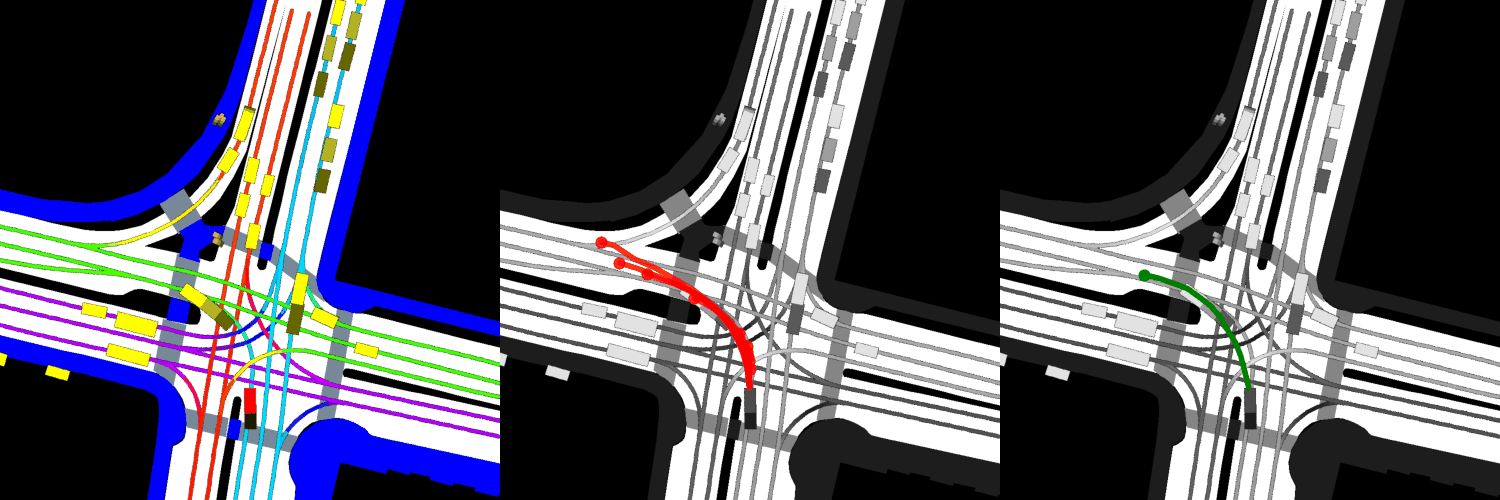Official PyTorch code for paper "Q-EANet: Implicit social modeling for trajectory prediction via experience-anchored queries"
Accurately predicting the future trajectory and behavior of traffic participants is crucial for the maneuvers of self-driving vehicles. Many existing works employed a learning-based “encoder-interactor-decoder” structure, but they often fail to clearly articulate the relation-ship between module selections and real-world interactions. As a result, these approaches tend to rely on a simplistic stacking of attention modules. To address this issue, a tra-jectory prediction network (Q-EANet) is presented in this study, which integrates GRU encoders, MLPs and attention modules. By introducing a new explanatory rule, it makes a contribution to interpretable modeling, models the entire trajectory prediction process via an implicit social modeling formula. Inspired by the anchoring effect in decision psy-chology, the prediction task is formulated as an information query process that occurs before traffic participants make decisions. Specifically, Q-EANet uses GRUs to encode features and utilizes attention modules to aggregates interaction information for gener-ating the target trajectory anchors. Then, queries are introduced for further interaction. These queries, along with the trajectory anchors with added Gaussian noise, are then processed by a GRU-based decoder. The final prediction results are obtained through a Laplace MDN. Experimental results on the several benchmarks demonstrate the effec-tiveness of Q-EANet in trajectory prediction tasks. Compared to the existing works, the proposed method achieves state-of-the-art performance with only simple module design.
The code is primarily designed for the nuScenes motion prediction dataset. To perform data preprocessing, please refer to PGP, as this work utilizes its project structure. The environment configuration is also consistent with it.
Suppose that the data has undergone proper preprocessing and has been appropriately placed in their respective directory locations.
To evaluate, just run:
python evaluate.py -config [XX/configs/ant.yml] -data_root [YOURS] -data_dir [YOURS] -output_dir [YOURS] -checkpoint [XX/outputs/checkpoints/best.tar]If you find this repository interesting and it has inspired you in certain ways, please consider citing our work:
@article{chen2023q,
title={Q-EANet: Implicit social modeling for trajectory prediction via experience-anchored queries},
author={Chen, Jiuyu and Wang, Zhongli and Wang, Jian and Cai, Baigen},
journal={IET Intelligent Transport Systems},
year={2023},
publisher={Wiley Online Library}
}
